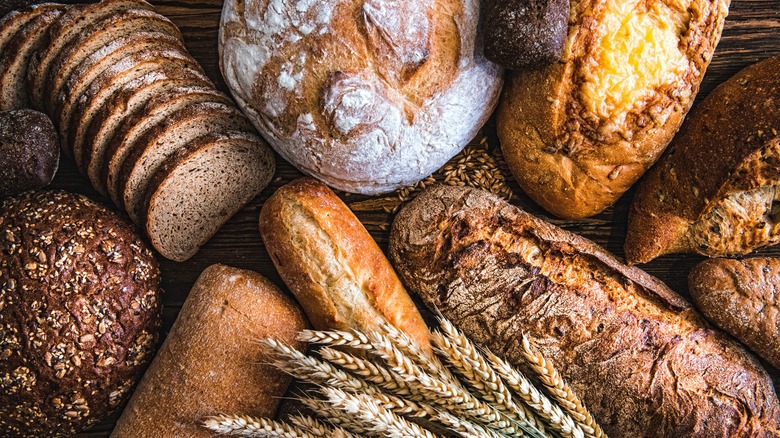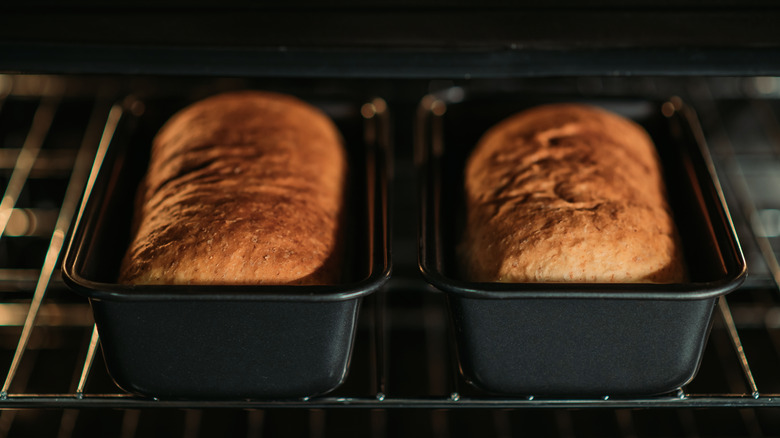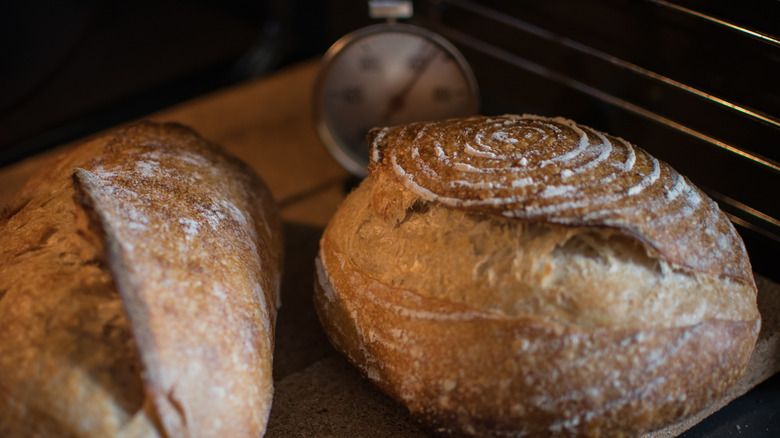How To Check Bread For Doneness When You Can't Find The Thermometer
Whether you're preparing a quick banana bread or a two-day sourdough boule, making homemade loaves can be rewarding. However, consistently creating a golden crust, tender crumb, and Instagram-worthy score pattern can be challenging for any level of baker. Luckily, there are some tips to help increase your success.
People have been baking bread for over 10,000 years, so, suffice to say, producing a delicious loaf doesn't require fancy equipment. Still, tools like digital probe thermometers are invaluable when baking to know when the internal temperature is just right. But, if you don't have one or can't find yours, there are other intuitive ways to check your bread for doneness without having to cut it open.
Like any skilled cook, you'll want to use all your senses when baking. The more you familiarize yourself with how baked bread should look, smell, feel, and sound, the easier it will be to recognize when it's done. The best way to do so is looking for visual cues like a golden crust and listening for a hollow sound, among other tips.
However, each type of bread will have different characteristics — for example, some are darker or denser than others — so it's essential to familiarize yourself with the recipe first in order to assess the progress and prevent taking the bread out of the oven too early.
Visual cues to look out for when baking bread
The incredible aroma of baking bread is probably the first clue that it's almost done, but there are also visual indicators to look for when trying to determine its status. In general, the bread's crust should be golden brown (if the outside of the loaf is pale, the bread likely needs more time to bake).
It should be noted that enriched breads like challah and brioche, which receive an egg wash, will get darker than other varieties — unless it smells like it's burning, don't be alarmed by this darker tone. You can always examine spots of the loaf where the bread hasn't been brushed with egg, like between the braids, or take it out of the pan to examine the bottom and sides. These parts should be golden, not mahogany like the top will be. This is harder to tell on dark bread like pumpernickel, so in that case, you'll want to look for other clues.
Similar to testing the doneness of a cake, using a toothpick or skewer to pierce the center of the bread can provide another visual clue. If the utensil comes out mostly dry, the bread can be removed from the oven (it will continue to bake due to carryover cooking). However, moist bread like banana options, especially if there are chocolate chips inside, will be wetter than something like a sourdough farm loaf, so you can expect some crumbs on the skewer or toothpick when it comes out.
How the bread sounds and feels can also indicate if it's ready
When you think the bread has finished baking, remove it from the oven. If the bread is in a loaf pan, take it out and place it upside down on a cooling rack. Tap the bottom of the loaf firmly and listen. The bread should make a "hollow" sound. If it doesn't, place it back into the oven, test it a few times over the next few minutes, and look for other indicators that it's done.
You can also touch the bread to assess. If the recipe should produce a crusty exterior, for example, then check that the outside is dry and difficult to crack when it comes out of the oven. If you can easily pierce it, it needs more time. The weight of the bread can also provide information. Since water evaporates as it bakes, a finished loaf will be roughly 15% lighter than it was when it was just a ball of raw dough.
If you're making a quicker option like zucchini or banana bread, it's also good to know that a big indicator of doneness is that these kinds will pull away from the pan's sides when ready.
If the bread smells, looks, feels, and sounds like it's done, but the center is still undercooked when you slice it, then the oven's temperature may be the issue. In this case a thermometer will definitely come in handy to gauge if it's working properly.



